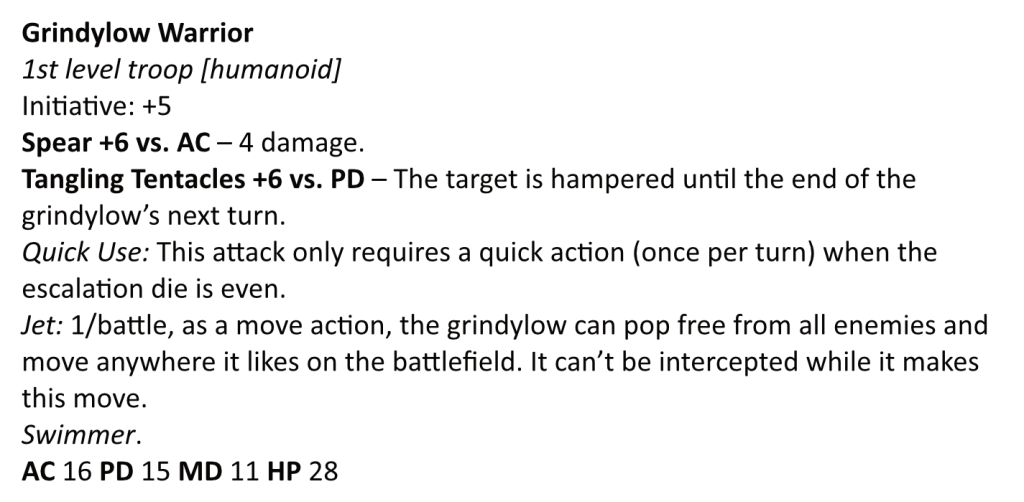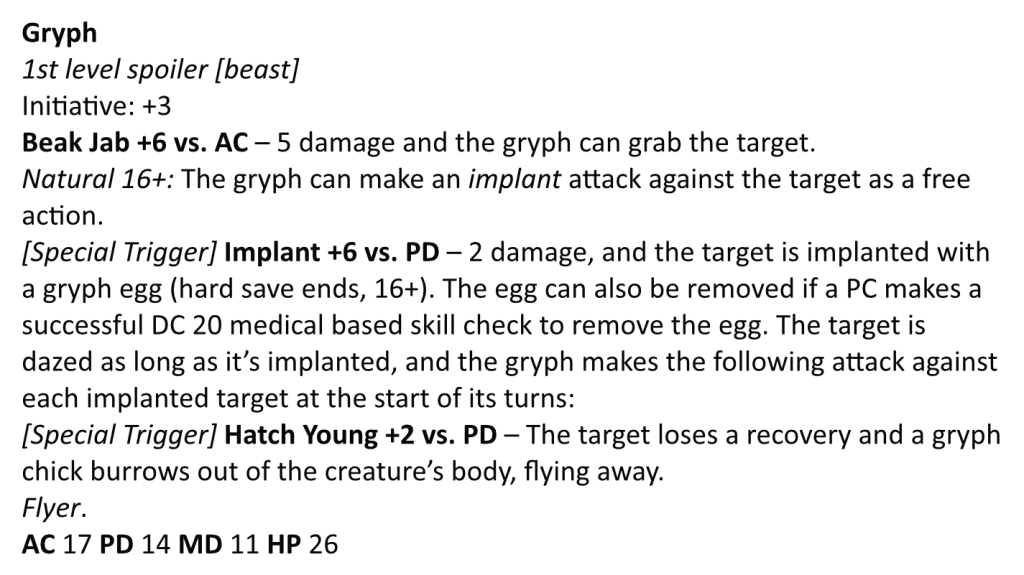Grindylow look like goblins from the waist up, and octopuses from the waist down, though each has only 6 tentacle arms. Standing 4 feet from head to tentacle tip, the small communities of them that live along the edge of the Midland sea are vicious and voracious, eating anything they can catch including other humanoids. These bands will raid the sea constantly, hunting merfolk in the depths and travelling ships on the surface, presenting a remaining threat that the blessing over the sea can’t repel. Grindylow will adopt and train octopuses whenever possible, but they have a deep and abiding hatred for squids, seeing them as deformed and unworthy cousins of the octopus. While most grindylow remain small, some are affected by a mutation that causes them to never stop growing, over the years of their life reaching incredible sizes. Few get much larger than a human before their death by violence, but those who survive can reach the size of an ogre, or even a giant, large enough to crush small boats. Fortunately, few exhibit this trait.

Grindylow Warrior
1st level troop [humanoid]
Initiative: +5
Spear +6 vs. AC – 4 damage.
Tangling Tentacles +6 vs. PD – The target is hampered until the end of the grindylow’s next turn.
Quick Use: This attack only requires a quick action (once per turn) when the escalation die is even.
Jet: 1/battle, as a move action, the grindylow can pop free from all enemies and move anywhere it likes on the battlefield. It can’t be intercepted while it makes this move.
Swimmer.
AC 16 PD 15 MD 11 HP 28
A six legged, hawk-sized stork, gryphs are likely the result of magical experimentation or mutation, rather than truly natural. While they mostly look like a typical wading bird blessed with additional legs, they carry an additional mutation that makes them more threatening. Content to feed on small fish, amphibians, and carrion for the most part, when their mating season comes great flocks of them begin hunting their territory for much larger prey, minimum human sized. The flock mobs likely targets, grasping them in their many legs and extending an ovipositor from their abdomen which they use to sting the target, planting an egg inside the target. This egg hatches within moments if it survives, the new young digging its way out of the body in a bloody display. Each gryph has up to a dozen eggs it can plant, so the flock will harry and implant the same target as many times as possible, until the erupting young kill the target and so a new living target is needed. Most often, gryph live underground or other dark environments.

Gryph
1st level spoiler [beast]
Initiative: +3
Beak Jab +6 vs. AC – 5 damage and the gryph can grab the target.
Natural 16+: The gryph can make an implant attack against the target as a free action.
[Special Trigger] Implant +6 vs. PD – 2 damage, and the target is implanted with a gryph egg (hard save ends, 16+). The egg can also be removed if a PC makes a successful DC 20 medical based skill check to remove the egg. The target is dazed as long as it’s implanted, and the gryph makes the following attack against each implanted target at the start of its turns:
[Special Trigger] Hatch Young +2 vs. PD – The target loses a recovery and a gryph chick burrows out of the creature’s body, flying away.
Flyer.
AC 17 PD 14 MD 11 HP 26
Inspired by the Pathfinder 1e Bestiary 2. This post came out a week ago on my Patreon. If you want to get access to all my monster conversions early, as well as access to my premade adventures and other material I’m working on, consider backing me there!
